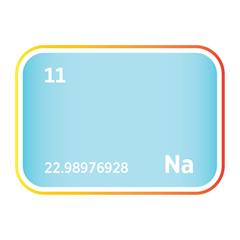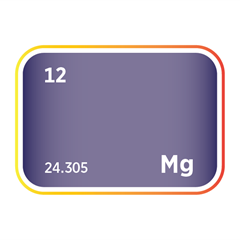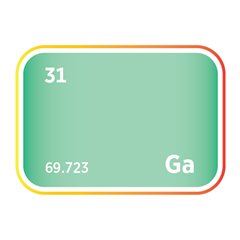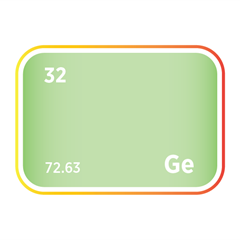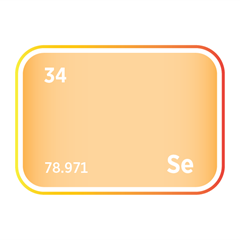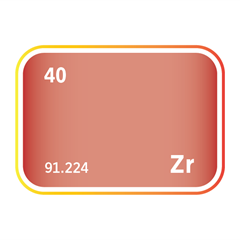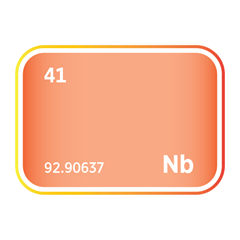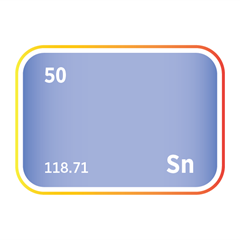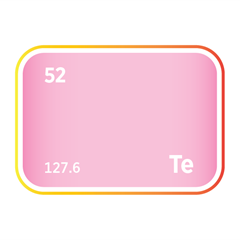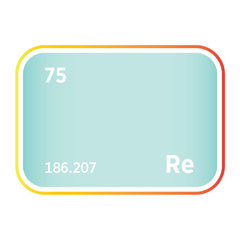Plutonium
Critical Minerals and The Energy Transition
Navigating the Plutonium Market
Plutonium, a strategically vital element, plays a central role in energy, defence, and space technologies. Primarily produced through nuclear reactor operations, plutonium is a key fuel in electricity generation, particularly in mixed oxide (MOX) reactors, supporting decarbonisation goals and energy security. Its role in national defence is equally significant, underpinning nuclear deterrence strategies and influencing global power dynamics. In space exploration, plutonium-238 serves as a compact and long-lived power source for deep-space missions, enabling scientific discovery far beyond Earth's orbit. Demand for plutonium stems from its unique nuclear properties, but its use is tightly governed by international treaties, safety protocols, and non-proliferation regimes. The sector faces considerable challenges, ranging from secure long-term storage and ageing stockpile management to geopolitical tensions and the evolving role of nuclear energy. As countries reconsider the future of closed fuel cycles, fast breeder reactors, and advanced reprocessing, plutonium remains at the nexus of innovation and risk. Navigating its supply and application requires balancing innovation with environmental responsibility and global security.
An introduction to plutonium
Plutonium demand and end-uses
Plutonium is a dense, silvery radioactive metal with complex nuclear properties that make it one of the world's most strategically significant and tightly controlled elements. Primarily produced in nuclear reactors through the irradiation of uranium-238, plutonium exists in multiple isotopic forms, with plutonium-239 and plutonium-238 being the most commercially and scientifically important. Though not widely used in civilian industries due to its radiotoxicity and proliferation risk, plutonium is central to nuclear energy, national defence, space exploration, and scientific research, making it a critical material in geopolitics and high-technology systems.
The most prominent application of plutonium is in the defence sector, where plutonium-239 is used as a fissile material in nuclear weapons. Its ability to undergo rapid neutron-induced fission makes it ideal for compact, high-yield warhead designs. Several nuclear-armed states maintain military stockpiles of weapons-grade plutonium, and the production, handling, and dismantling of such material are subject to strict security and international monitoring. The long half-life and high radiological risk of plutonium necessitate advanced safeguards and multilateral arms control agreements to prevent proliferation and ensure long-term storage safety.
In the civil nuclear sector, plutonium is used in mixed oxide (MOX) fuel, which blends plutonium dioxide with uranium dioxide to power conventional nuclear reactors. MOX fuel offers a way to recycle plutonium from spent nuclear fuel, reducing the need for fresh uranium and helping to manage nuclear waste inventories. It is used in several countries, including France and Japan, and provides a partial solution for plutonium disposition while contributing to energy generation. However, economic, technical, and political challenges have limited the widespread adoption of MOX fuel, particularly in countries with limited reactor compatibility or reprocessing infrastructure.
Plutonium-238, a different isotope, plays a vital role in space exploration as a radioisotope heat source. It is used in radioisotope thermoelectric generators (RTGs), which convert heat from radioactive decay into electricity. RTGs power long-duration, unmanned spacecraft that operate far from the Sun, where solar panels are ineffective. Iconic missions such as Voyager, Cassini, Curiosity, and Perseverance have relied on plutonium-238 to provide continuous, maintenance-free power for scientific instruments, communication, and mobility. With renewed global interest in deep space exploration and crewed missions to the Moon and Mars, plutonium-238 remains critical to powering robotic probes, landers, and scientific stations in remote or extreme environments.
In scientific research, plutonium is used in nuclear science, radiochemistry, and materials testing, particularly to study actinide behaviour, transmutation, and fuel cycle performance. Research reactors and national laboratories utilise minute quantities of plutonium for isotope production, detector calibration, and criticality experiments. Its role in fundamental physics, including neutron capture studies and nuclear cross-section measurements, supports advances in reactor design, waste management, and nuclear forensics.
Because of its radiological toxicity, long half-life, and potential use in weapons, plutonium is subject to stringent international controls, including oversight by the International Atomic Energy Agency (IAEA), bilateral agreements, and the Treaty on the Non-Proliferation of Nuclear Weapons (NPT). Storage and disposal remain major challenges, with efforts underway to immobilise surplus plutonium through vitrification, deep geological disposal, or reactor irradiation.
Civilian plutonium use is expected to remain limited, with MOX fuel production confined to a few specialised facilities. Defence-related use will continue under existing deterrence doctrines, with global non-proliferation efforts focusing on preventing diversion, ensuring disarmament transparency, and reducing excess stockpiles. However, demand for plutonium-238 is expected to grow modestly, driven by space agencies’ expanding ambitions for outer solar system missions, lunar exploration, and planetary science.
Plutonium remains a critical and sensitive material at the heart of nuclear technology with its unmatched energy density, nuclear reactivity, and scientific significance. Its uses span the spectrum from energy and exploration to deterrence and research, making it one of the most strategically important and carefully managed elements in the periodic table.
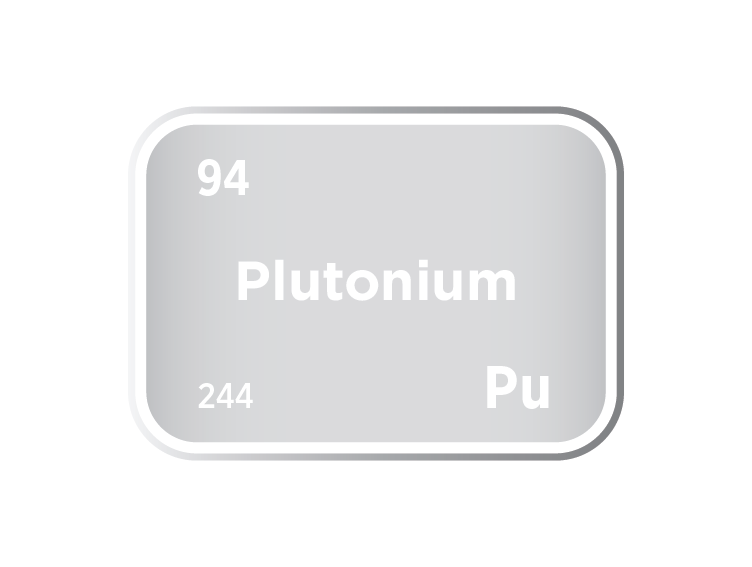
Plutonium supply
Plutonium is an artificial element not found in significant quantities and must be synthesised in nuclear reactors. It is primarily produced when uranium-238 absorbs a neutron, transforming into plutonium-239 after a series of decay processes. This transformation occurs in the reactor core during regular operation. The plutonium is extracted from spent nuclear fuel through chemical reprocessing, most commonly using the PUREX (Plutonium Uranium Redox Extraction) method. This process separates plutonium and uranium from fission products and other actinides, enabling potential reuse in mixed oxide (MOX) fuel or, in some contexts, for military applications.
Global plutonium inventories are concentrated in countries with extensive civil nuclear energy programmes or historical weapons development. The United States and Russia possess the most comprehensive stocks, much of it in the form of separated plutonium from weapons or civilian reprocessing. France and the United Kingdom also maintain substantial stocks, primarily for MOX fuel fabrication. China is increasing its holdings, which are aligned with expanding its nuclear power fleet and its broader strategic interests in closed fuel cycle development.
Thus, plutonium supply is not determined by traditional geological or mining factors but by reactor throughput, reprocessing capacity, and national policy on fuel cycle closure. Only a handful of countries have the technical infrastructure and legal frameworks required to reprocess spent fuel and handle plutonium safely. This makes the global plutonium supply highly concentrated and subject to strict international oversight, especially through the International Atomic Energy Agency (IAEA) safeguards regime.
Reprocessing rates and plutonium separation policies vary significantly. Some countries, such as Germany and the United States, have abandoned mainly civilian reprocessing due to proliferation concerns, economics, and public opposition. Others, like France and Japan, continue to pursue closed fuel cycles, although high costs and operational delays, particularly in Japan’s Rokkasho plant, have constrained progress.
A further layer of complexity arises from the dual-use nature of plutonium. While plutonium-239 can be used as a nuclear fuel, it is also fissile enough for weapons use, prompting strict controls under non-proliferation treaties. Military-grade plutonium stockpiles, particularly those exceeding disarmament treaty limits, remain a sensitive issue in international security and arms control negotiations.
Not all plutonium is equal. While plutonium-239 is highly fissile and suitable for both nuclear fuel and weapons, other isotopes like plutonium-240 and plutonium-241 accumulate with longer reactor burnup times and degrade its suitability for weapons use. This isotopic variability affects how plutonium is classified and stored, and whether it is viable for MOX fuel fabrication or must be immobilised as waste. Civil plutonium is typically reactor-grade, not weapons-grade, which has implications for proliferation risk and safeguards.
Plutonium is radiologically and chemically unstable over long periods. Its alpha decay generates heat, and isotopes like plutonium-241 decay into americium-241, a gamma-emitting isotope that complicates handling, storage, and fuel fabrication. This means ageing plutonium becomes more complex and expensive to reuse over time, with increasing health and environmental risks if not properly managed.
Countries are divided on the end use of plutonium. France, Russia, Japan, and China favour MOX fuel and closed fuel cycles, aiming to reduce long-term waste and increase energy extraction. The United States, United Kingdom, and Germany have largely moved away from this approach, favouring geological disposal of plutonium as part of broader nuclear waste strategies. This policy divergence complicates global cooperation and contributes to strategic uncertainty.
Plutonium plays a central role in some fourth-generation nuclear reactors, particularly fast breeder reactors, which aim to extract far more energy from nuclear fuel and reduce waste. Countries like Russia, China, and India invest heavily in these systems, which could reinvigorate plutonium demand and shift the global supply dynamic. However, economic, technical, and public resistance remain obstacles to widespread deployment.
Extensive Cold War-era plutonium inventories remain unresolved, particularly in the United States and Russia. Bilateral agreements like the Plutonium Management and Disposition Agreement (PMDA) have faced setbacks and suspensions, leaving tens of tonnes of surplus weapons-grade plutonium in limbo. Converting these materials into MOX or vitrified waste is technically feasible but politically contentious and financially burdensome.
Given its potential use in improvised nuclear devices, plutonium remains one of the most tightly secured materials on Earth. Any increase in global reprocessing or transport raises concerns over nuclear terrorism, leading to heightened scrutiny from agencies such as the IAEA and Nuclear Security Summits. This intensifies pressure to minimise civilian plutonium separation and maximise multilateral transparency.
The future of plutonium supply is closely linked to the evolution of nuclear energy policy, particularly the adoption of fast reactors, advanced reprocessing technologies, and international moves toward reducing separated plutonium inventories. Initiatives to immobilise excess plutonium, convert it into MOX fuel, or dispose of it through vitrification reflect growing concerns over stockpile security, cost, and proliferation risk. Plutonium supply is shaped less by market dynamics than by national strategic choices, technological capability, and geopolitical trust, making it one of the most tightly regulated and politically charged elements in the global critical materials landscape.
Civil plutonium producers
Military-grade plutonium producers
Plutonium substitution
Plutonium’s unique nuclear properties make it difficult to substitute directly in most core applications, particularly as a fissile material in civil and military nuclear systems. In civilian reactors using mixed oxide (MOX) fuel, plutonium-239 plays a key role in sustaining nuclear fission. While uranium-235 can fulfil this role in conventional light-water reactors, replacing plutonium in fast reactors or MOX fuel cycles is not straightforward without significant redesign and efficiency loss. Thorium–uranium fuel cycles have been proposed as a partial alternative, particularly where energy security or proliferation concerns drive interest in plutonium-free systems. Still, these remain at the pilot or demonstration stage in most jurisdictions.
In weapons applications, there are no viable technical or strategic substitutes for plutonium-239. Highly enriched uranium (HEU) can be used in some warhead designs, but international efforts to reduce HEU stockpiles and associated proliferation risks limit its appeal. Moreover, substituting HEU for plutonium changes weapon size, yield, and shelf-life characteristics, making it operationally complex and politically sensitive.
For research reactors and space missions, where plutonium-238 is used as a radioisotope power source (not for fission but for heat generation), alternatives such as americium-241 or strontium-90 have been considered. However, these provide lower energy densities and pose greater radiological handling challenges. As such, plutonium-238 remains uniquely suited to long-duration, deep-space missions like those undertaken by NASA and other space agencies.
While theoretical substitutes exist for some niche applications, no material matches the combination of fissile properties, compact energy density, and engineering maturity that plutonium offers. Substitution is therefore more about reducing reliance through reactor design innovation, reprocessing policy, or non-proliferation goals, rather than replacing plutonium outright in its most strategic uses.



Meet the Critical Minerals team
Trusted advice from a dedicated team of experts.

Henk de Hoop
Chief Executive Officer

Beresford Clarke
Managing Director: Technical & Research

Jamie Underwood
Principal Consultant

Dr Jenny Watts
Critical Minerals Technologies Expert

Ismet Soyocak
ESG & Critical Minerals Lead

Thomas Shann Mills
Senior Machine Learning Engineer

Rj Coetzee
Senior Market Analyst: Battery Materials and Technologies

Franklin Avery
Commodity Analyst

How can we help you?
SFA (Oxford) provides bespoke, independent intelligence on the strategic metal markets, specifically tailored to your needs. To find out more about what we can offer you, please contact us.


















